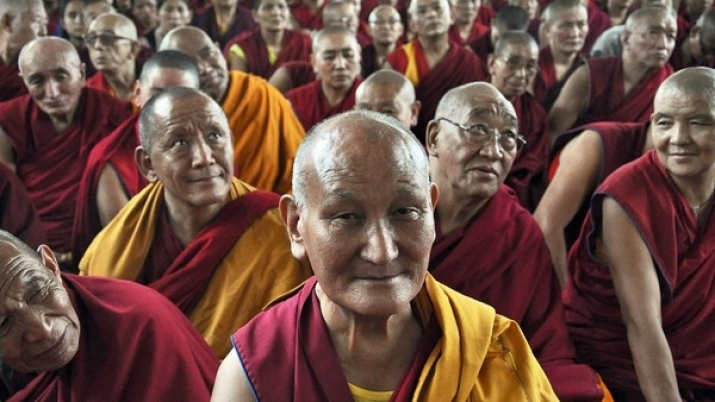NEWS
China Publishes Database of Authorized Living Buddhas, Dalai Lama Omitted
 From ft.com
From ft.comChina’s State Administration for Religious Affairs (SARA) on Monday published an online database of 870 “authentic living Buddhas.” Perhaps unsurprisingly, the list in Chinese and Tibetan, which includes a name, ID number, photograph, date of birth, and monastery of residence for each officially verified lama, omits the Dalai Lama, the most senior religious figure in Tibetan Buddhism.
According to a statement on the SARA website, the Buddhist Association of China (BAC) hosted a ceremony to mark the launch of the online resource at Beijing’s famous Guangji Temple, originally built during the Jin dynasty (1115–1234).
“In recent years, some people in Tibetan areas and other parts of China have posed as living Buddhas to show off and swindle others, harming the interests of the masses and damaging the reputation of Tibetan Buddhism and living Buddhas,” said the statement, quoting officially certified living Buddha Drukhang Thubten Khedrup, vice president of the BAC. “Now with the living-Buddha database, people will know at a glance if they’re dealing with a real living Buddha.” (The Wall Street Journal)
In December last year, Li Decheng, director of the Religious Research Department at the China Tibetology Research Center, said people claiming to be living Buddhas were often able to deceive followers of Tibetan Buddhism outside of Tibetan areas as they had limited understanding of the religion, such as the process required to recognize an incarnate lama, or tulku—in Tibetan Buddhism, one who has been identified as the incarnation of a deceased great master or teacher.
The BAC said on Monday that information about more living Buddhas would be made public once their status had been certified. The details of the Dalai Lama were noticeably absent from the database. China has accused the Dalai Lama of leading a separatist movement to wrest Tibet from Chinese control, while the Dalai Lama has publicly said that he seeks only greater autonomy for Tibet within China.
Zhu Weiqun, chairman of the Chinese People’s Political Consultative Conference’s Ethnic and Religious Affairs Committee, said on Monday, “The system will strike a heavy blow to the Dalai Lama as he has been utilizing his religious status to ratify Living Buddhas at will—which is against religious tradition—in an attempt to control Tibetan monasteries and divide the country.” (Global Times)
Traditionally, the identification of the incarnation of a living Buddha such as the Dalai Lama is a complex procedure involving divination, dream interpretation, prayer, and an oracle. The Chinese government has said that it alone has the authority to approve the rebirth of the current Dalai Lama, who has lived in exile since fleeing Tibet in 1959. In 2007, the State Administration for Religious Affairs decreed that all Tibetan Buddhist lamas who plan to be reincarnated must receive government approval, otherwise they will be considered “illegal or invalid.” Reincarnation applications must be approved by four different governmental bodies.
See more
活佛查询系统正式启用 首批可查870名活佛 (State Administration for Religious Affairs of PRC [Chinese only])
China Launches Living-Buddha Authentication Site, Dalai Lama Not Included (The Wall Street Journal)
Database launched to check identity of Living Buddhas (China Daily)
China launches Living Buddha database to curb impostors (Global Times)
China Publishes List of 'Verified Buddhas' (Voice of America)
Reincarnation (His Holiness the 14th Dalai Lama of Tibet)
China Compiling Database of Living Buddhas, Says Government Official (Buddhistdoor Global)
China Reasserts Authority on Dalai Lama Reincarnation (Buddhistdoor Global)
Tibetan Government-in-exile Cautions China Against Plan to Pick Dalai Lama’s Successor (Buddhistdoor Global)














